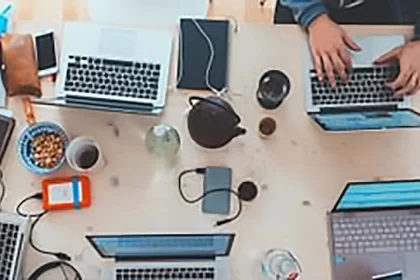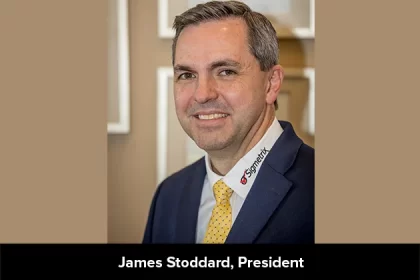The modern workplace has shifted faster than most people’s habits. Hybrid schedules, home offices, and flexible hours sound ideal on paper, yet the same tools that give freedom also blur the line between “on” and “off.” Many teams now live in a loop of alerts, quick replies, and rolling meetings, and that drip of attention tax is what leaves people flat by Thursday. Companies that take burnout seriously are treating it as a design flaw to fix, not a personal weakness to manage.
A useful nudge has come from places outside the usual HR playbook. Digital entertainment platforms have long studied how people pay attention, when they need breaks, and what brings them back with energy rather than fatigue. You can see that thinking in online casinos like Stake, where sessions are framed with clear limits, tools for responsible play, and simple rewards that nudge people to pause and reset. Firms are not copying gambling. They are borrowing the psychology of pacing and recovery, then translating it into work rhythms that feel fair and sustainable.
The Reality of Burnout
Burnout is less a single feeling and more a sequence. Messages get skimmed rather than read. Easy tasks feel much more complicated, and wins don’t land. You plan one focused afternoon and watch it dissolve into context switching. During the pandemic years, the commute disappeared and meetings multiplied, and a lot of teams never rebuilt the boundaries that used to be automatic. The result is a steady erosion of attention and motivation that no smoothie voucher can fix, leading to increased global burnout rates.
Forward-thinking companies now treat burnout prevention as core operations. The question is not who can push through. The question is how to shape weeks so that good work is possible without draining the battery.
Moving Past Wellness as a Perk
For years, wellness lived on the edges of work. A gym discount here, a mindfulness code there. Those gestures were pleasant but cosmetic. They did not touch the real issues of overloaded calendars, shifting priorities, and launches that default to last-minute scrambles. People don’t burn out because they missed a yoga session. They burn out because the system never leaves room to recover.
The firms that feel different have pulled health and energy into the centre of planning. Workload reviews happen before deadlines are set. Meeting policies are written to protect focus rather than to fill diaries. Outcomes matter more than green dots. Time off is planned, supported, and respected, so people return ready to contribute rather than braced for a backlog.
Designing Work that People Can Actually Sustain
The most effective changes are practical and visible. Teams map work before each cycle and rebalance when the load tilts toward a few individuals. Calendars include company-wide focus windows where internal meetings and messages pause, which gives quiet space for deep tasks. Meeting slots default to shorter lengths, so there is a natural buffer between sessions and less spillover. After-hours messaging follows a clear rule that non-urgent conversations wait until morning, with an agreed way to escalate true blockers. None of this is grand. It is simply tidy, and tidy days are kinder on the mind.
Flexibility is the other pillar. When people can shape their day around their productive hours, quality improves and stress eases. Some do their best thinking early, others later. Treating adults like adults tends to pay off. The point is not to abandon structure but to leave enough room for different brains to do good work.
What Leadership Looks Like in a Healthy Culture
Culture is mostly what leaders repeat. If senior people send midnight emails and cancel holidays, the team learns that rest is optional. If leaders log off properly, protect their evenings, and take real breaks, the team learns that balance is part of the job. Many managers are now trained to ask cleaner questions and to negotiate scope rather than pretending time is elastic. “What would make this timeline realistic, and what should we drop to hit it?” is a far more honest conversation than “Can you still do Friday?”
Leaders who narrate their own boundaries make it safer for others to do the same. A short note that says, “I am offline this afternoon to finish the proposal and will reply after three,” sets expectations, protects focus, and models the behaviour the company wants.
Using Technology to Reduce Strain
Technology created a lot of the noise, but used wisely, it can also turn the volume down. Calendar analytics reveal which teams spend most of their day in meetings and which projects produce the heaviest after-hours traffic. That is not surveillance. It is a mirror. Once patterns are visible, policies can change with less friction and more facts.
Personal tools are also improving. Light prompts to stand up, breathe for two minutes, or delay a non-essential meeting to preserve a clean focus block can prevent a tired afternoon from becoming a wasted one. Some companies offer short virtual reality resets. Five minutes in a calm environment between two demanding calls is not a cure for a bad process, but it helps the nervous system return to neutral. Wearables that track sleep and recovery give people a clearer sense of when to push and when to pace themselves, which is the heart of sustainable performance.
Rewards That Actually Restore Energy
Pay and progression matter, yet the rewards that fight burnout best are the ones that give back time and meaning. Many teams now use wellness stipends with genuine choice, so a person can invest in therapy, coaching, sport, music lessons, or a creative course. After major releases, companies are scheduling planned recharge days for the whole unit, including the people who supported the launch from the edges. Some organisations build in short sabbaticals after a set number of years. People return with new ideas and steadier energy, which is exactly what you want from a long-term colleague.
The shift here is subtle. Rewards are not bribes to work longer. They are investments in the energy that makes great work possible.
Spaces That Help Brains, Not Just Bodies
Whether a team is office-based or hybrid, the physical setup still shapes the quality of attention. Offices that feel calm and human are now the benchmark. Natural light, plants, decent ventilation, sound-managed rooms for quiet work, and furniture that keeps people comfortable across a full day all make a measurable difference. The aim is not luxury. It is a space that lets thinking happen without a fight.
Remote workers deserve the same care. Modest stipends for a chair that supports the spine, a laptop stand, task lighting, and basic sound control prevent small annoyances from becoming long-term strain. Many companies ship a simple kit on day one. It says, in effect, that health and output are not competitors.
Purpose and Connection as Buffers Against Fatigue
Overwork is only part of the story. A lack of meaning drains energy just as quickly. Teams that anchor projects to real outcomes tend to ride the hard weeks with more resilience. Managers who explain who benefits, how success will be judged, and what will not be done help people feel the work is worth the effort.
Human connection matters as much as clarity. Mentorship, buddy systems, and small weekly rituals keep teams feeling seen. A short round of appreciation at the start of a Monday call, a rotating showcase of small wins, or a fortnightly clinic to remove blockers are simple habits that keep trust alive. When people feel they belong, they ask for help earlier and offer it more freely, which shortens the distance from problem to fix.
Start Small and Make It Stick
Large wellness programmes make fine slide decks, but consistent, ordinary practices change weeks. Choose one clean focus window most days and defend it. Trim meeting defaults and keep the buffer. Replace one recurring status call with a short written update. Require handover notes and named cover before any time off. After a month, review the effects and add one more improvement. The impact of small, steady changes is what people actually feel.
Where Is This Heading?
Workplaces are moving toward steadier rhythms. Planning cycles that include recovery, calendars that respect quiet time, offices that feel more like thoughtful studios than busy transit hubs, and tools that spot overload early will become normal. Hiring will prize sustainable pace as a skill rather than a slogan. None of this is soft. It is what protects the one engine every company relies on.










